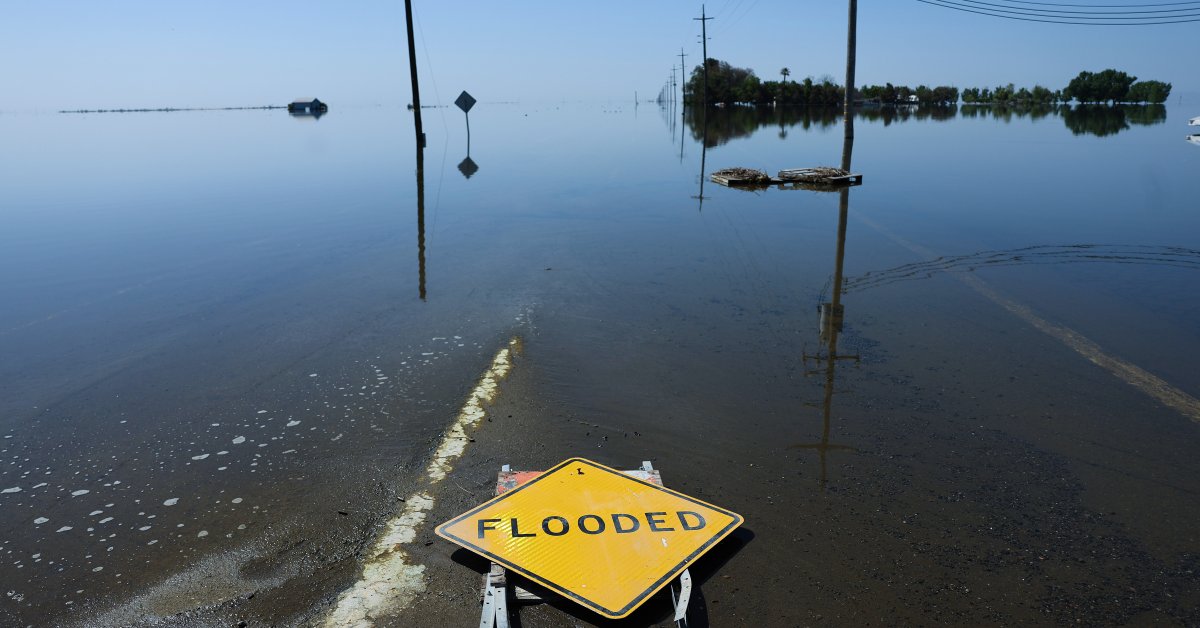Climate Change And The New Normal: Are Hundred-Year Events The New Standard?

Welcome to your ultimate source for breaking news, trending updates, and in-depth stories from around the world. Whether it's politics, technology, entertainment, sports, or lifestyle, we bring you real-time updates that keep you informed and ahead of the curve.
Our team works tirelessly to ensure you never miss a moment. From the latest developments in global events to the most talked-about topics on social media, our news platform is designed to deliver accurate and timely information, all in one place.
Stay in the know and join thousands of readers who trust us for reliable, up-to-date content. Explore our expertly curated articles and dive deeper into the stories that matter to you. Visit Best Website now and be part of the conversation. Don't miss out on the headlines that shape our world!
Table of Contents
Climate Change and the New Normal: Are Hundred-Year Events the New Standard?
Are we entering an era where extreme weather events, once considered exceptionally rare, are becoming commonplace? The devastating floods in Pakistan, the relentless heatwaves scorching Europe, and the increasingly frequent and intense wildfires across the globe – these are not isolated incidents. Scientists are increasingly pointing towards climate change as the primary driver, raising the chilling possibility that what were once considered "hundred-year events" are becoming the new normal.
This shift has profound implications for communities worldwide, demanding urgent action and adaptation strategies. The question is no longer if these events will occur, but how often and how intensely.
The Science Behind the Shift
The Intergovernmental Panel on Climate Change (IPCC), the leading international body for assessing the science related to climate change, has consistently warned about the increasing frequency and intensity of extreme weather events. Rising global temperatures, fueled by greenhouse gas emissions, are disrupting established weather patterns, leading to:
- More frequent and intense heatwaves: Higher average temperatures create a baseline for more extreme heat events, impacting human health, agriculture, and infrastructure.
- Increased precipitation and flooding: Warmer air holds more moisture, resulting in heavier rainfall and increased risk of devastating floods, as witnessed tragically in Pakistan in 2022.
- More powerful hurricanes and typhoons: Warmer ocean waters provide the energy for stronger and more destructive storms.
- Widespread droughts: Changes in precipitation patterns are leading to prolonged droughts in various regions, impacting water resources and agriculture.
- Increased wildfire risk: Higher temperatures and drier conditions create ideal conditions for wildfires to ignite and spread rapidly, as seen in the devastating Australian bushfires and California wildfires in recent years.
The Economic and Social Costs
The consequences of these increasingly frequent extreme weather events are far-reaching and devastating. The economic costs associated with damage to infrastructure, loss of life, and disruption to businesses are staggering. Beyond the financial impact, there are significant social costs, including displacement, loss of livelihoods, and mental health consequences for affected communities. [Link to a relevant article on the economic costs of climate change].
Adapting to the New Normal: A Call to Action
While mitigating climate change through emissions reduction remains crucial, adaptation strategies are equally vital. This involves:
- Investing in resilient infrastructure: Designing buildings, roads, and other infrastructure to withstand extreme weather events.
- Improving early warning systems: Developing and implementing effective systems to alert communities about impending threats.
- Strengthening disaster preparedness and response: Equipping communities with the resources and training to respond effectively to extreme weather events.
- Promoting sustainable land management: Implementing practices that protect against erosion, flooding, and wildfires.
- Investing in climate-resilient agriculture: Developing crops and farming practices that can withstand changing climate conditions.
The Urgent Need for Global Cooperation
Addressing the challenge of climate change and adapting to the new normal requires a concerted global effort. International cooperation, investment in research and development, and policy changes are essential to mitigate the impacts of climate change and build more resilient communities. The time for action is now. Ignoring the scientific evidence and delaying action will only exacerbate the risks and increase the suffering caused by these increasingly frequent and intense extreme weather events.
What steps can you take in your community to prepare for the impacts of climate change? Share your thoughts in the comments below.

Thank you for visiting our website, your trusted source for the latest updates and in-depth coverage on Climate Change And The New Normal: Are Hundred-Year Events The New Standard?. We're committed to keeping you informed with timely and accurate information to meet your curiosity and needs.
If you have any questions, suggestions, or feedback, we'd love to hear from you. Your insights are valuable to us and help us improve to serve you better. Feel free to reach out through our contact page.
Don't forget to bookmark our website and check back regularly for the latest headlines and trending topics. See you next time, and thank you for being part of our growing community!
Featured Posts
-
 Critics And Fans Agree This Netflix True Crime Series Is A Masterpiece But Difficult Viewing
Jun 01, 2025
Critics And Fans Agree This Netflix True Crime Series Is A Masterpiece But Difficult Viewing
Jun 01, 2025 -
 Niezwykly Przedmiot Na Korcie Iga Swiatek Zaskakuje Przed Meczem
Jun 01, 2025
Niezwykly Przedmiot Na Korcie Iga Swiatek Zaskakuje Przed Meczem
Jun 01, 2025 -
 The Autopen And The 2020 Election Trumps Claims And The Political Fallout
Jun 01, 2025
The Autopen And The 2020 Election Trumps Claims And The Political Fallout
Jun 01, 2025 -
 Musks Drug Use White House Dodges Questions
Jun 01, 2025
Musks Drug Use White House Dodges Questions
Jun 01, 2025 -
 Sergio Garcias Dp World Tour Reinstatement Reactions And Analysis
Jun 01, 2025
Sergio Garcias Dp World Tour Reinstatement Reactions And Analysis
Jun 01, 2025
